Stay Safe: Tree Care Tips
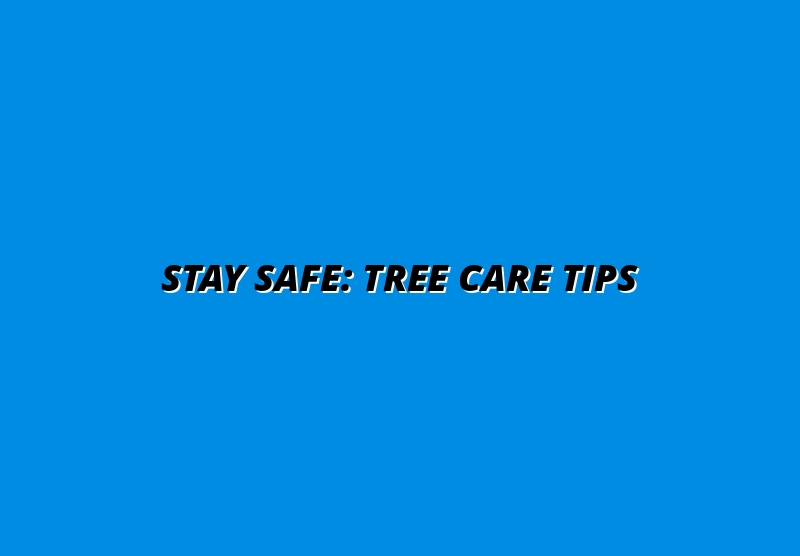
Severe weather can wreak havoc on your property, especially when it comes to trees. The risks associated with tree damage during storms are significant, affecting not just your landscape but also the safety of your home and loved ones. Are you prepared to face the potential dangers? This article provides essential insights into emergency tree care and how to protect yourself and your property when severe weather hits.
What You Will Learn
- The importance of regularly inspecting trees for signs of decay or damage to mitigate risks during storms.
- Key safety precautions, including personal protective equipment, to have on hand during severe weather emergencies.
- How to conduct a proper post-storm assessment of your trees to identify any potential damage or hazards.
- The types of tree damage to look for, such as broken branches and leaning trees, and their implications for safety.
- Tips for documenting tree damage effectively for potential insurance claims, including taking clear photographs.
- When to seek professional help and what to consider when choosing an arborist for tree care services.
- Proactive maintenance practices that can enhance the resilience of your trees and reduce storm-related risks.
Essential Emergency Tree Care Insights
Key strategies for ensuring safety and preparedness during severe weather events are summarized below.
Identify Hazards
Regularly inspect your trees for signs of decay, unstable limbs, and nearby hazards such as power lines.
Safety Equipment
Always have essential safety gear ready, including helmets, goggles, gloves, and first aid kits.
Evaluate Damage
After a storm, look for broken branches, leaning trees, and cracked trunks to assess potential hazards.
Documenting Damage
Take clear photographs and notes of any damage for insurance claims and professional evaluations.
Professional Help
Consult an arborist for significant damage or when trees pose a risk to properties or power lines.
Emergency Tree Care: Essential Tips for Severe Weather Preparedness
When severe weather strikes, being prepared can be the difference between safety and disaster. At Safe Canopy Care, we understand the risks associated with tree damage—especially during storms. Trees can become hazardous when high winds and heavy rain are in the mix, posing threats to your home, family, and the overall safety of your property.
That’s why it’s vital to have a proactive plan for emergency tree care. Not only does this help protect your property, but it also ensures you can respond swiftly should a tree emergency arise. By staying informed and prepared, you can mitigate risks that could lead to costly damage or even injuries. For more detailed insights on managing these risks long-term, consider exploring our article on long-term tree risk management tips.
Understanding the Importance of Emergency Tree Care
Have you ever thought about what could happen if a large tree in your yard became unstable during a storm? The potential dangers are significant! From falling branches to uprooted trees, the implications of tree damage can be severe. Understanding these risks is the first step in being prepared.
At Safe Canopy Care, we emphasize the importance of identifying threats early on. By evaluating your trees and property before severe weather hits, you can take necessary precautions that protect not just your home, but also your peace of mind.
- Inspect trees regularly for signs of decay or damage.
- Know your local weather patterns and prepare accordingly.
- Have an emergency kit ready with essential tools and supplies.
Adopting a Safety-First Approach in Tree Care
Identifying Hazards in Your Environment
Before taking any action during a storm, first assess your surroundings. Are there downed power lines nearby? Are there unstable tree limbs that could fall? Identifying these hazards is critical to ensuring your safety. Always approach hazards with caution, and if you're unsure, it's best to seek professional help.
By keeping a close eye on your environment, you can prevent accidents and respond more effectively when needed. Remember, safety first!
Safety Precautions for Emergency Response
Having the right equipment can make all the difference during an emergency. Here are some crucial safety precautions and gear to consider:
- A hard hat to protect your head from falling debris.
- Safety goggles to shield your eyes while working.
- Gloves to protect your hands from sharp branches.
- A first aid kit for minor injuries.
With the right tools at your disposal, you'll be better prepared to handle any tree care emergencies that may arise during severe weather. For more essential guidance, ensure you are familiar with essential tree emergency tips.
Safe Practices for Immediate Tree Assessment
After a storm, it's crucial to assess any potential damage to your trees safely. Look for specific signs of damage, such as:
- Broken branches that are hanging or touching the ground.
- Leaning trees that may be unstable.
- Cracked trunks or visible root damage.
Using tools like a tape measure and a camera can help document the condition of your trees. If the damage looks significant, don't hesitate to call a professional, like Safe Canopy Care, to assist with the assessment.
Evaluating Storm-Damaged Trees
Types of Tree Damage to Look For
Recognizing different types of damage is essential for determining the next steps. Here’s what to look for:
- Broken branches: Can cause injury or further damage if not addressed.
- Leaning trees: May indicate root damage, risking future stability.
- Cracked trunks: Compromise the tree's structural integrity.
- Root damage: Can lead to the tree falling over entirely.
Understanding these types of damage will help you make informed decisions about your trees' safety.
Post-Storm Assessment and Recovery Strategies
After evaluating the damage, it's important to plan for recovery. Assessing the state of your trees plays a crucial role in determining their fate. Here are a few strategies for recovery:
- Remove broken branches carefully to prevent further injury.
- Consult an arborist if the damage is extensive, as they can provide guidance.
- Consider if rehabilitation is possible or if removal is the best option.
This proactive approach not only aids in recovery but also promotes the health of your remaining trees.
Documenting Tree Damage for Insurance Claims
In the unfortunate event of serious damage, proper documentation is essential for insurance claims. Here are some tips:
- Take clear photographs of all damaged areas from various angles.
- Make notes of the date and details of the damage.
- Keep records of any professional evaluations or services rendered.
Having this evidence ready can streamline the claims process and increase the likelihood of a successful outcome.
When Professional Help is Necessary
Recognizing the Signs that Require Expert Intervention
There are certain situations where calling in a professional is crucial. For instance:
- Large trees that pose a risk to power lines or structures.
- Significant damage that could lead to hazards.
- Signs of disease or decay that you cannot identify.
When in doubt, it’s always best to consult a professional, like Safe Canopy Care, who can assess the situation accurately and provide expert recommendations. For guidance on finding reliable services, you might find our article on using a tree service directory helpful.
Choosing an Arborist for Professional Tree Care
Finding the right arborist is key to ensuring your trees are in good hands. Consider the following criteria when making your choice:
- Check for proper certifications and licenses.
- Look for customer reviews and testimonials.
- Inquire about their experience with storm-related damage.
Taking the time to select a qualified tree care provider will give you confidence in their ability to protect your property.
Pro Tip
Did you know? Regularly inspecting your trees during calm weather can help you identify potential hazards before they become a serious threat. Look for signs of decay, such as cracks in the bark or fungi growth at the base. Early detection can save you time, money, and potential damage during severe weather!
Summarizing Key Emergency Tree Care Insights
As we wrap up our discussion on emergency tree care, it's crucial to reflect on the essential tips and strategies we've covered. Prioritizing safety and preparation can make all the difference when severe weather strikes. Whether it's recognizing the signs of tree damage or knowing when to call in a professional, these insights empower you to protect your property and loved ones effectively.
Remember, being proactive in tree maintenance not only safeguards your home but also enhances the resilience of your trees against future storms. With the right approach, you can mitigate risks and ensure your landscape remains a safe haven for your family.
Recap of Essential Emergency Tree Care Tips
Here’s a quick recap of the key points we've explored in this article:
- Understand the importance of assessing hazards like unstable tree limbs and downed power lines before taking action.
- Always prioritize personal safety with proper precautions and equipment during severe weather.
- Evaluate tree damage carefully, looking for signs like cracked trunks or broken branches.
- Document any damage thoroughly for insurance claims with photographs and notes.
- Know when to seek professional help for significant damage or large trees.
- Consider emergency removal only when it's urgent and ensure safety practices are followed.
By keeping these tips in mind, you'll be better prepared to handle any tree-related emergencies that may arise!
Encouraging Proactive Tree Maintenance Practices
At Safe Canopy Care, we believe that ongoing tree care is vital to minimizing potential damage from severe weather. Regular maintenance helps keep your trees healthy and resilient, which can significantly reduce risks during storms.
Here are some proactive practices to consider for your tree care routine:
- Conduct regular inspections for signs of disease or instability.
- Prune trees to maintain healthy growth and remove any dead or damaged branches.
- Implement a storm preparedness plan tailored to your property’s specific needs.
- Engage a professional for annual assessments to catch any issues before they escalate.
By incorporating these practices into your routine, you can ensure your trees are not just surviving but thriving, ready to withstand the challenges of unpredictable weather. This proactive approach is key to preparing trees for storm season effectively.
Resources for Professional Assistance and Further Learning
If you're looking to deepen your understanding of tree care or need professional help, I encourage you to explore some valuable resources. Here are a few options:
- International Society of Arboriculture - Offers a wealth of information on tree health and safety.
- Tree Care Industry Association - Great for finding certified professionals in your area.
- Safe Canopy Care Tree Safety Masterclass - Join me for a comprehensive online course to learn more about tree risks and safety measures.
These resources can help you make informed decisions about your tree care and connect you with experts who can assist you.
Engaging with Your Local Community on Tree Safety
Tree safety is a community effort! I invite you to share your own experiences and tips for maintaining healthy trees. By discussing your strategies with neighbors or participating in local initiatives, you can contribute to a culture of preparedness and awareness.
Consider joining community workshops, neighborhood tree care days, or online forums focused on tree safety. Not only can this help you learn from others, but it can also strengthen your local network in times of need.
Let's work together to keep our homes safe and our trees strong. Every small effort counts in creating a safer outdoor space for everyone!
Recap of Key Points
Here is a quick recap of the important points discussed in the article:
- Assess your surroundings for hazards like unstable tree limbs and downed power lines before taking action during severe weather.
- Prioritize personal safety by using proper precautions and equipment, including hard hats and safety goggles.
- Evaluate tree damage carefully, looking for signs such as cracked trunks and broken branches.
- Document any damage thoroughly with photographs and detailed notes for insurance claims.
- Recognize when it's necessary to seek professional help for significant damage or large trees at risk of falling.
- Consider emergency removal only when urgent, ensuring safe practices are followed throughout the process.
Frequently Asked Questions About Emergency Tree Care
After a storm, prioritize personal safety by checking for downed power lines and obvious hazards. Then, safely assess trees for broken branches, leaning trunks, and root damage. Document any findings with photos for potential insurance claims.
You should call a professional arborist if there are large trees posing a risk to power lines or structures, significant damage that could create new hazards, or signs of disease/decay that you cannot identify. When in doubt, it’s always best to consult an expert.
Essential safety gear includes a hard hat, safety goggles, gloves, and a first aid kit. These items will help protect you from falling debris, eye injuries, cuts, and allow for immediate treatment of minor injuries.
Proactive maintenance includes regular inspections for decay or instability, pruning to remove dead or damaged branches, implementing a storm preparedness plan, and engaging professionals for annual assessments. These practices enhance tree health and resilience.
For insurance claims, thoroughly document the damage with clear photographs from various angles, make detailed notes including the date and specifics of the damage, and keep records of any professional evaluations or services rendered. This evidence streamlines the claims process.
Popular Posts
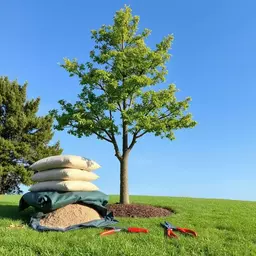 Storms can be unpredictable, but your response doesn’t have to be. By understanding storm prepared
Storms can be unpredictable, but your response doesn’t have to be. By understanding storm prepared
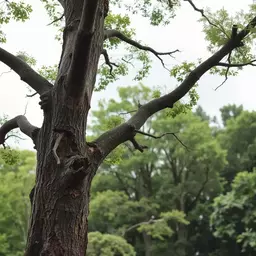 As storms can strike without warning, ensuring the safety of your trees is not just a precaution—i
As storms can strike without warning, ensuring the safety of your trees is not just a precaution—i
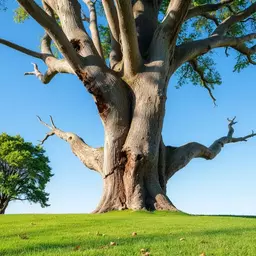 Have you ever considered how a single tree could be a ticking time bomb for your property? Understan
Have you ever considered how a single tree could be a ticking time bomb for your property? Understan
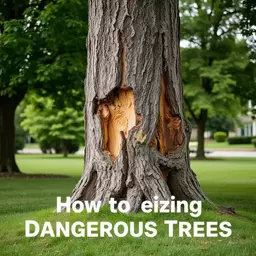 Have you ever considered how something as seemingly benign as a tree can quickly become a danger? Ea
Have you ever considered how something as seemingly benign as a tree can quickly become a danger? Ea
